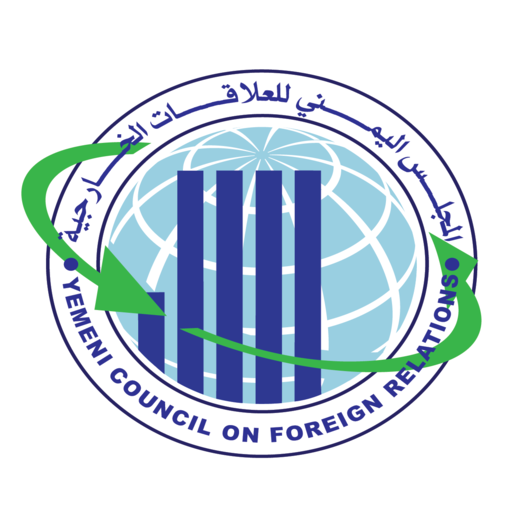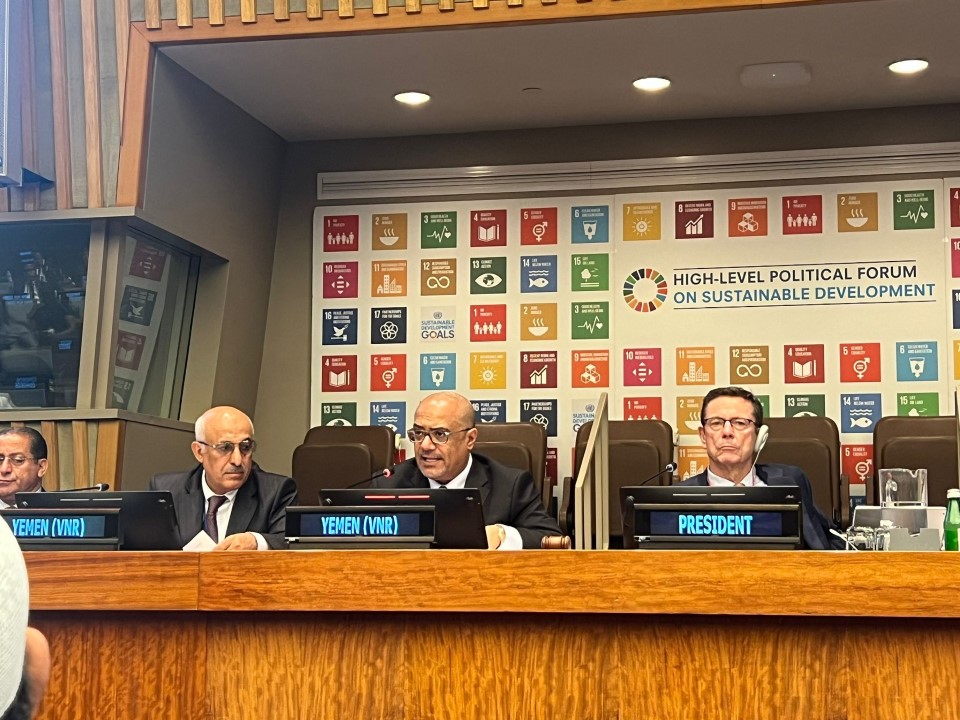On Wednesday, the Republic of Yemen presented its first Voluntary National Review (VNR) at the High-Level Political Forum on Sustainable Development, held in New York from July 8th to 17th, 2024. The report represented the first attempt to conduct a comprehensive review of the implementation of the Sustainable Development Goals (SDGs) in Yemen.
Dr. Waed Badhib, Minister of Planning and International Cooperation, presented a concise summary of Yemen’s first VNR. He highlighted the report’s key findings, including the exceptional circumstances faced by the government during its preparation. He emphasized the Republic of Yemen’s commitment to moving forward in achieving the SDGs.
The report adopted a scenario-based methodology. The first scenario, the baseline scenario, reflects current development trends. The results of this scenario are not mere projections of historical trends but dynamic projections of complex system interactions. This scenario depicts a bleak future where conflict persists and escalates, exacerbating challenges stemming from extensive damage, coupled with a scarcity of resources and capabilities needed for recovery.
The second scenario, the development push scenario, presents an ambitious outlook simulating a successful and concerted effort to improve sustainable development in Yemen. It anticipates significant improvements in governance and security, alongside targeted policy interventions to bolster economic growth, infrastructure, food and health systems, and build resilience and adaptability to climate change and future challenges.
Dr. Badhib outlined the significant challenges hindering the achievement of the SDGs. These include the ongoing conflict and war over the past decade since the Houthi coup against the legitimate government and the state. The conflict has resulted in a 50% contraction in economic activity, with economic losses amounting to approximately US$126 billion. Other challenges include the decline in government institutions’ performance, weak governance, inadequate anti-corruption efforts, the cessation of statistical data and surveys since 2015, difficulties in implementing initiatives at the national level, crises and disruptions in supply chains and energy sources, a decrease in remittances from expatriates and foreign aid to Yemen, climate change impacts, and the country’s vulnerability to natural disasters.
Dr. Badhib also highlighted Yemen’s strengths, including its unique strategic location, which positions it to play a pivotal role politically, economically, and securely. Yemen boasts a 2,500 km coastline stretching along the Red Sea, Gulf of Aden, Indian Ocean, and Arabian Sea, controlling the Bab al-Mandab Strait, a passageway for 20% of global oil trade. The country possesses potential agricultural, fisheries, oil, and gas resources, along with mineral wealth and human capital.
The Minister of Planning and International Cooperation explained that the path to achieving the SDGs involves several crucial steps. These include reaching a comprehensive and sustainable peace agreement in Yemen based on the outcomes of the National Dialogue, the Gulf Initiative, UN Security Council resolutions, particularly Resolution 2216, and the Riyadh Agreement. Mobilizing funding from regional and international communities for reconstruction and achieving the SDGs, transitioning from humanitarian aid to development interventions, addressing external debt, building institutional capacity at central and local levels and enhancing governance, investing in appropriate digital infrastructure, adapting to climate change in promising sectors, forging broad partnerships with the private sector, civil society, and donors, and strengthening the private sector’s role in financing development and reconstruction are also crucial steps.
Source: https://pmo-ye.net/post/7727

